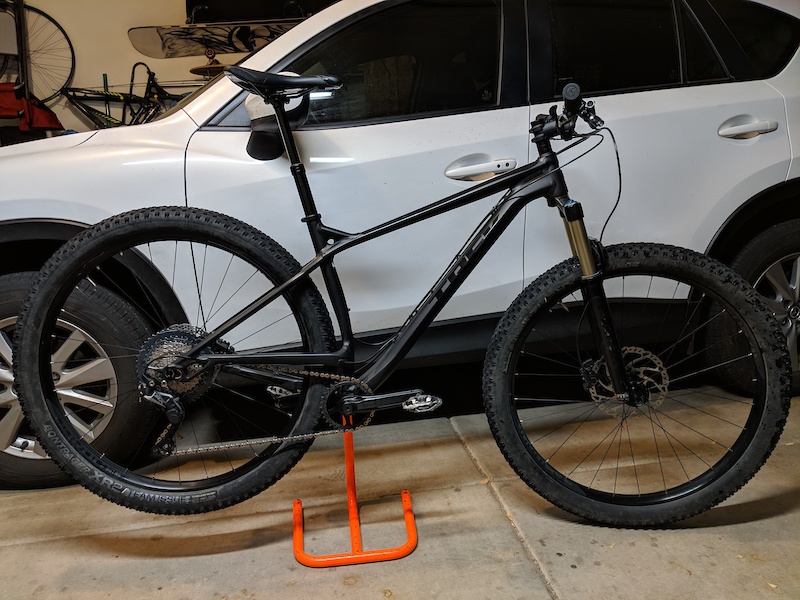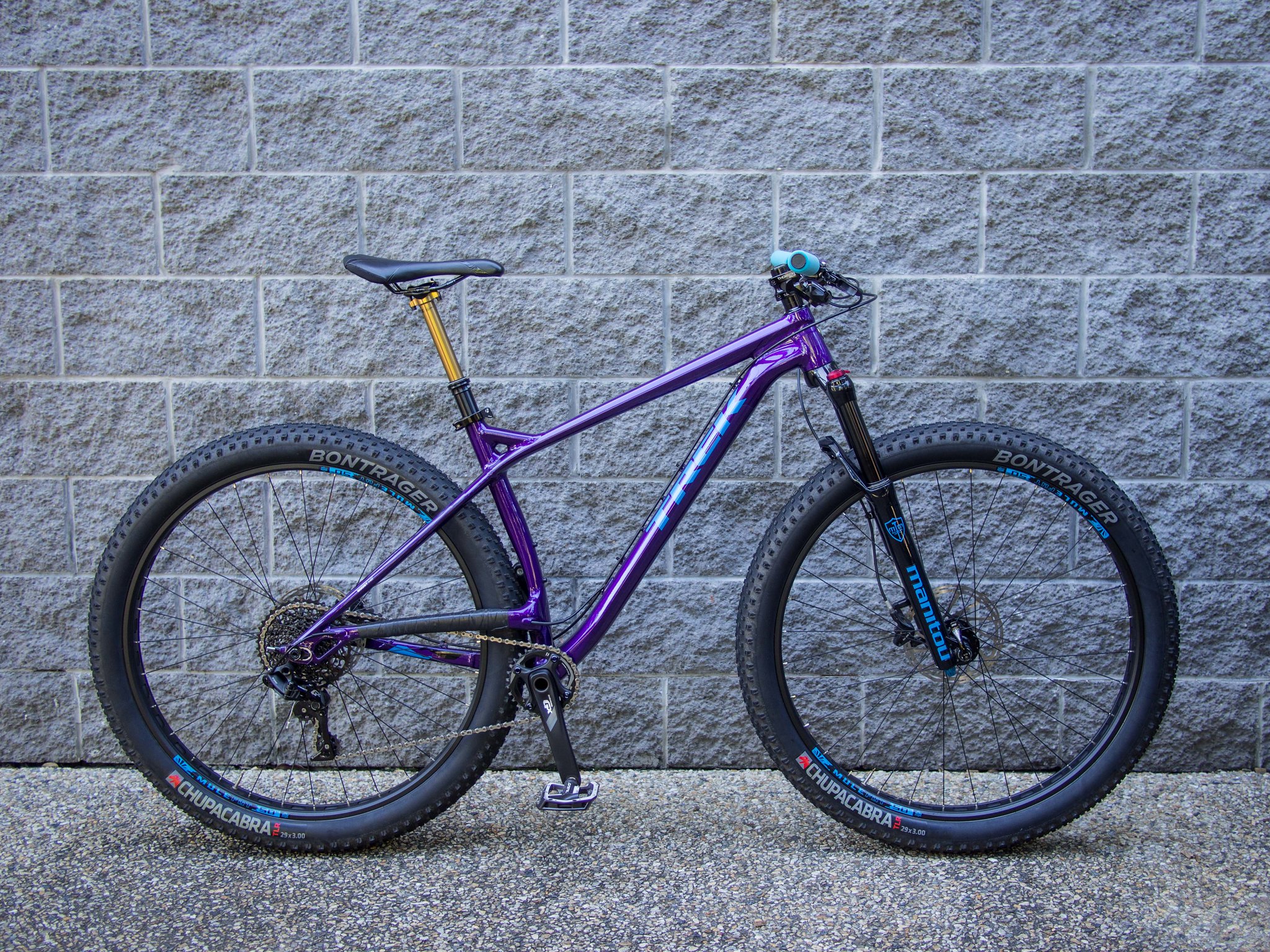

The tread pattern of the Chupacabra sits somewhere between a Bontrager XR2 and XR3 which we found struck an excellent balance between rolling efficiency, sidewall stability and traction. Check out the scraping above the Bontrager logo- that’s some sturdy sidewall protection! We know this because with a 3” tyre you’ll be scraping the sidewalls of the tyre against lots of stuff on the trail, but despite this, the Chupacabra remained intact throughout the review.

The result of the project was the Bontrager Chupacabra, a 3” tyre that weighs just 860 grams! Despite the light weight, the Chupacabra is tubeless ready, and the sidewall protection was high.

We were lucky to chat with Trek’s Travis Brown where we discussed the Stache, and he summed up the decision to go with 29+ wheels by saying ‘if you’re the type of rider willing to take a small weight penalty for a lot of extra control and traction, and the ability to run low pressures, we came out with the 29+ to be superior.’Ģ9+ wheels with 3” tyres must be heavy right?Īt first glance, you would presume that the Bontrager Chupacabra tyres would weigh significantly more than regular tyres, however, one of the key aims of the Stache project (which was entitled ‘project weird’) was to create a lightweight 29×3.00 tyre. While the Stache is never going to feel like a dual suspension bike in choppy terrain, setting up the monstrous Chupacabra tyres tubeless and with the pressures low the bike has excellent small bump compliance. The second advantage of 29+ tyres is the small bump sensitivity that can be achieved by running the voluminous tyres at lower pressures.
#2013 stache 7 review Patch#
Firstly, with a bigger contact patch you’ve got more grip on the ground in virtually any condition than a goanna scaling a tree. An increased contact patch is beneficial in two main ways.


 0 kommentar(er)
0 kommentar(er)
